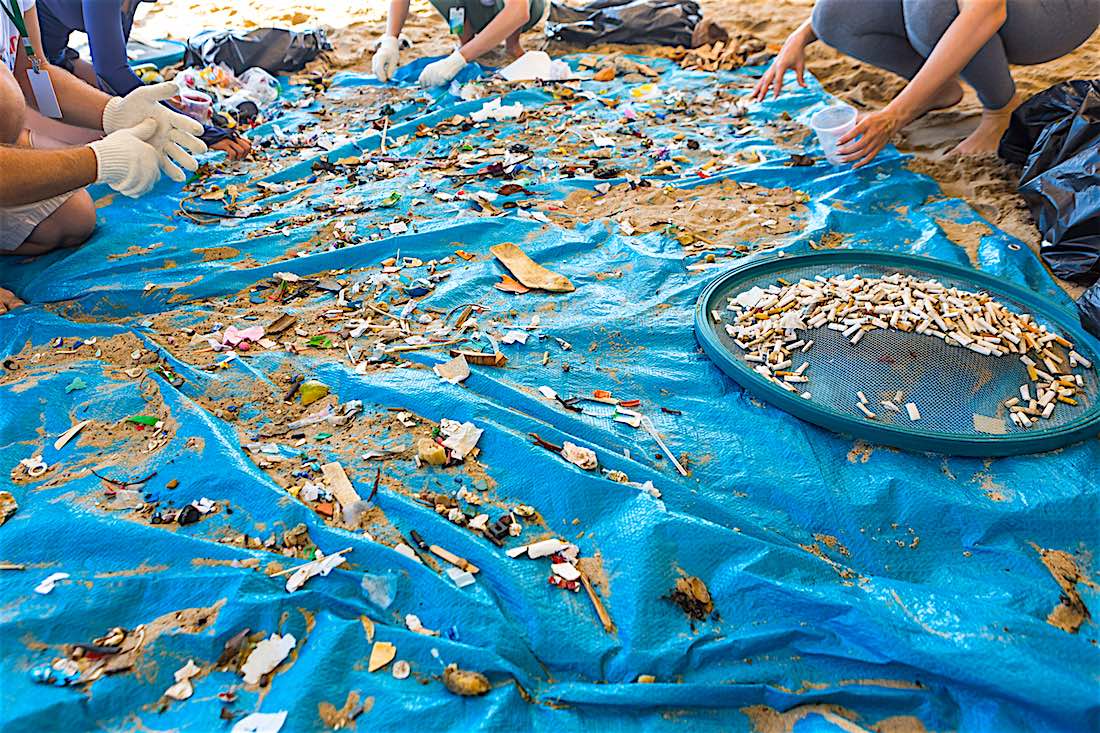Beach Clean ups on Koh Tao
Helping to Keep Koh Tao Beaches Clean
Over the past decade it has become apparent we have a global issue when it comes to ocean trash, debris and pollution.
We can see this on our beaches, especially after a period of bad weather and unfortunately, we can also see this on our coral reefs.
This garbage causes lots of damage and pollution to the ecosystem and presents a clear and present danger to marine life who eat and digest various types of trash including microplastics.

Marine Animals become Entangled
Sadly, marine animals including sea turtles and whales can also become entangled in ocean trash such as fishing nets and drown or they digest larger plastic items, often mistaking it for food and the plastic often suffocates them.
Ocean trash also makes our beautiful beaches and oceans look dirty and unpleasant.
Frustratingly the local community on Koh Tao cannot do much in the way of preventative measures to stop or reduce this.
The ocean trash that is washed up on Koh Tao’s beaches, in our bays and on our reefs has travelled to our beautiful island from the mainland and we have little control over preventing this.

Ocean Trash – Dive Against Debris
Our geographical position in the middle of South east Asia means Koh Tao is surrounded by some of the biggest world’s biggest ocean polluters.
Depending on ocean currents and weather patterns, the trash that we find on Koh Tao originates from a variety of areas and countries in the region including Thailand.
Here are some shameful facts and figures on Ocean trash
- Estimates vary but it is expected that somewhere between 6-8 million tons of debris enters the world’s oceans annually.
- Plastic is the single biggest threat to the health of the world’s oceans and it does not really degrade. Instead, environmental factors such as sun exposure, and wave motion cause plastics to break down into smaller pieces called microplastics which find their way into the food chain.
- Plastic trash contains toxins and these toxins poison whatever animal digests the plastic posing a significant threat to marine life.
- It is estimated that for every square kilometre of our oceans there are over 18,000 pieces of plastic debris floating.
- Microfibers from synthetic clothes find their way into our waterways after clothes have been laundered and they do not break down and can make up a large percentage of beach trash.
- It is estimated that over 1 million seabirds are killed by marine debris every year.
- It is estimated over 100,000 marine animals such as seals, whales, dolphins along with sea turtles die annually from becoming entangled and or consuming ocean trash, the majority of which is plastic.

Cleaning up Koh Tao’s Beaches
Most of the trash found in our oceans washes up on beaches and coastal waters. Each week on Koh Tao, volunteers and members of the local community and the diving industry organize a beach clean-up.
The most common items we find during our beach clean up’s include plastic bags and bottles, packaging material, metal cans, fishing equipment as well as glass bottles.

Cigarette Butt Clean Ups
Cigarette butts are also commonly found on the beach and they contain lots of microplastics.
We also organise dive site clean ups and dive against debris dives to collect ocean trash that has littered the reefs and dive sites.
We record data from these clean ups and this data is useful to inform the public as well as stakeholders and decisions makers, allowing us to influence policy on waste reduction and limiting marine debris.
One such example is here on Koh Tao where the 7/11’s agreed in 2019 not to offer plastic bags to customers.





